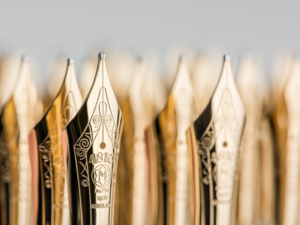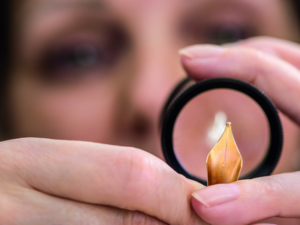
Antique, Vintage or Collectable – how best to describe your Fountain Pen?
We collectors (hoarders, aficionados, squirrels, gleaners, whatever) of fountain pens are always in a quandary, when it entails describing our prize possessions. How do you classify the Montblanc Rouge et Noir safety BHR (No. 4 long) pen that you inherited as a family heirloom – one one replete with its large red top? Is it an antique, or a vintage? A “classic”, certainly it is, a “collectable” also most definitely, but what is the actual term to describe its vintage accurately, without erring on the wrong side of 4810?

Take the Parker 51, the world’s most sold fountain pen for that matter – it is said that they had taken eleven years to develop the pen, but what does it make it? Is it an antique? Or a mere vintage? Point is, we lovers of fountain pens are so enamoured with the instruments that such terms really doesn’t matter as much as they should, but then again, one hates to be caught using a 51 to write something that is not technically correct about it either? Yes, we all commit the sin of using the terms “antique”, “collectable” and “vintage” interchangeably, often for the sake of phonetics, though, you will agree when I admit, something just doesn’t feel right. And believe me, it is almost as bad as a scratchy nib.

In the world of collectors, the most followed definition of the term “antique”, I gather, is provided by the US Customs Service, who classify anything that is more than a hundred years old as “antique”. By this logic, some early pens (simple black eyedroppers) manufactured by a German engineer called Eberstein from his workshop in Hamburg set up in 1906 and the early offerings of the Simplo Pen Company (into which his company morphed in 1908) would qualify as antiques. The stylised white star and the Montblanc name were to follow later, as we know. Thus, the top line Meisterstück which appeared post 1925, would thus not qualify as an “antique” and neither would anything with the 4810 mark on the nib! A few years down the line, yes, but not now, not today!

That brings us to Vintage – because anything that is “old”, but not sufficiently old enough to be termed an antique is a vintage. Pretty neat, but the point is we are talking fountain pens here, not Ming dynasty porcelain vases. The first robust, mass produced fountain pens arrived only in the 1880’s (with Waterman and Wirt slugging it out (which literally opened the goldrush) and things get a little edgy when one has such a small (comparatively speaking) period of time to date and play with. The Golden Age of fountain pens was the period between the two great Wars – which is literally just a window of a few decades and thus, most of the pens that we are willing to give an arm and a leg for, are merely vintage, not antiques. However, the term “going antiquing” – shopping for old fountain pens – is used in a more generalised and blanket manner, where the terms vintage and antique are understood to denote and mean the same.

But how old is vintage? Now that is where the boundaries blur even more. If you are a netizen scouring the furthest ends of the web space for the Grail pens, you will know what I mean, for there seems to be no consensus in the way these terms are thrown about, almost in gay abandon. One thing is pretty obvious though – anything older than two decades is termed vintage.
The term “Vintage” so far as Fountain pens go, in common usage, is meant to refer to old, recognised and of enduring interest, importance or quality; a Classic. An oldfangled, quaint, even retrograde writing instrument that exudes a nostalgic, old world charm! Sounds romantic and that is good enough for me – remember, it is all about our love for the fountain pen, ain’t it?

Antique, vintage, classic, retro – what’s in a term? A pen of beauty is a joy forever and a fountain pen, by any other name, would smell just a sweet?
